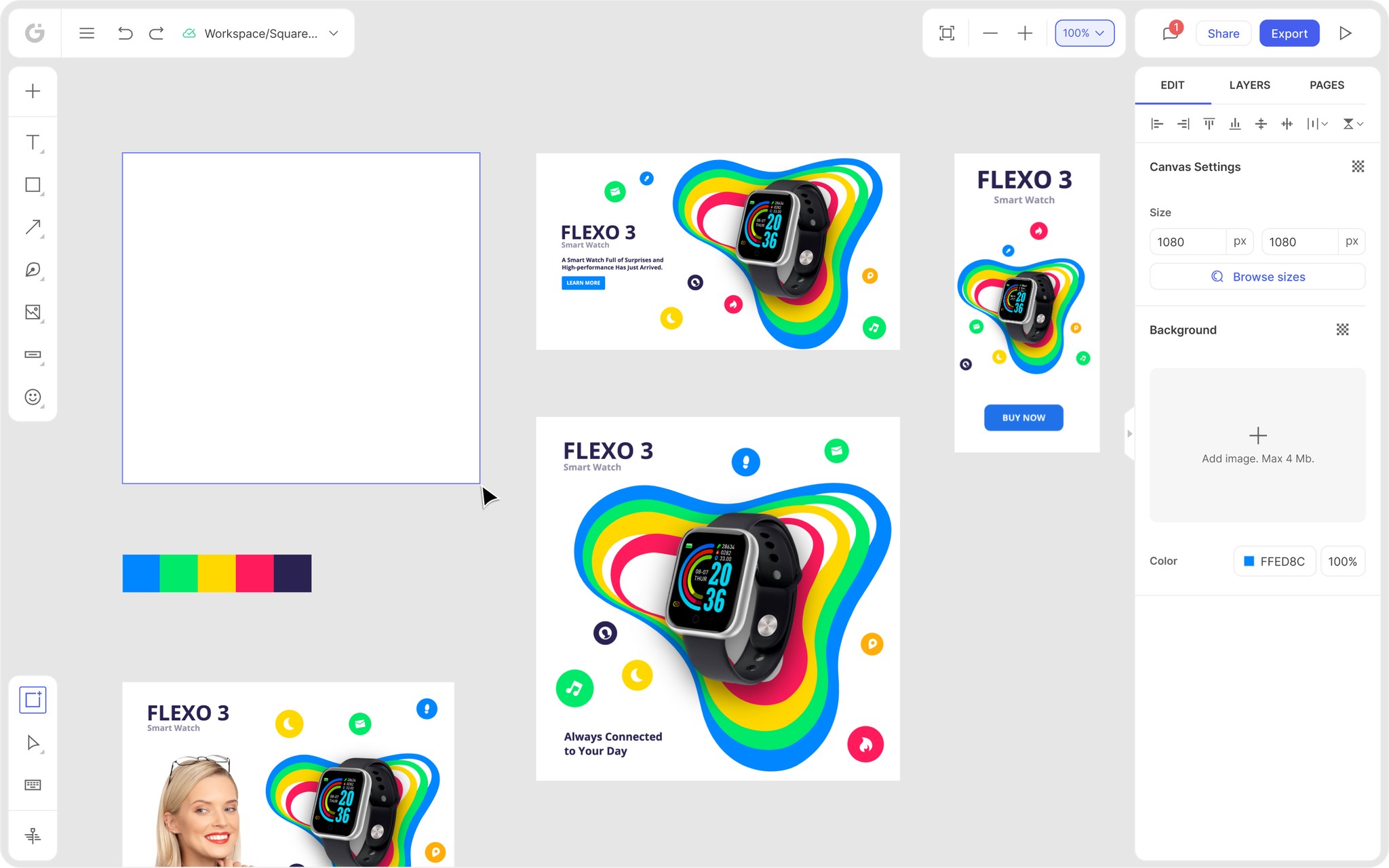Discover the essence of Amazon Storefront banners and their pivotal role in captivating potential customers. Learn the optimal size – 3000 pixels wide by 600 pixels tall – for seamless integration and stunning visual impact. Uncover expert tips for crafting compelling banners that reflect your brand identity and drive sales
8 Strategies for Personal Branding on Social Media in 2023
The importance of social media personal branding
Personal branding is one of the numerous developments brought by the digital era.
For example, do you have an Instagram profile? Do you frequently post on LinkedIn?
Well, you have a personal brand – and it's you.
You can only avoid personal branding by being entirely offline. Even then, it says something about you that you aren't on social media.
Most importantly, you'll have a significant competitive disadvantage over those who are actively online and posting.
But why is it so important?
First, it can help you stand out among the fierce competition and draw the attention of potential employers or clients.
For example, you can think about your LinkedIn profile as a technique to promote your professional achievements and yourself as a team player or creative individual.
Where to start with social media personal branding
Similar to developing any other brand, start with what makes you distinctive from others.
Then, start creating content that represents your ideas and values.
By engaging in conversation and exchanging knowledge on these topics and beliefs, you can determine the defining principles and opinions you stand for.
Remember that your online image and offline appearance should be consistent and demonstrate your genuine nature.
Depending on the skills you have, you can choose a different content approach.
For example, do you have excellent communication skills, have a unique viewpoint, or evoke emotion with your story-telling style?
Then you can choose the best possible practical route. For example – podcasts, vlogs, or blog posts.
8 Effective Social Media Personal Brand-building Methods
Let's look at eight social media personal branding strategies to increase engagement and draw in the possibilities that will benefit you.
1. Update your social media profiles
The first thing to do is to complete every information field for all social media accounts you have.
Potential customers, partners, or employers usually look at your bio or profile to confirm your identity. So, suppose you have outdated or incorrect info. In that case, it can affect your credibility and make people less likely to believe you.
Use your real name and a high-quality photo of yourself that reveals your face. Also, you can use your personal brand logo if you have one.
The second step is to select the social media accounts you want to concentrate on and remove any older ones you don't use anymore.
And finally, share details about your other accounts on each channel, as most users are engaged on many social networks.
The Twitter bio of fashion designer Charli Marie includes links to her YouTube channel and podcast's main page. At the same time, the homepage of her website makes all of her social media links easily accessible.
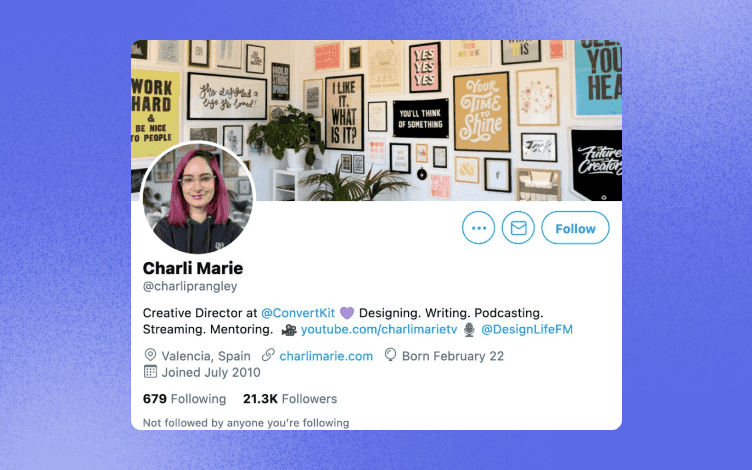
2. Choose your social media platforms
When choosing which social media network to concentrate on, consider the following:
Facebook is one of the most popular social media platforms and a crucial component of personal branding.
LinkedIn is the best place for professionals in any niche.
Instagram is a visually-driven platform. If you're doing something related to art, design, or fashion or enjoy experimenting with filters, photos, and short videos, this is your best choice.
Twitter is a popular choice for short content and real-time information.
The home of DIY enthusiasts and crafters, Pinterest is also an excellent platform for marketers, life coaches, and real estate agents to build their brands.
And finally, TikTok is where a good video can go viral faster than anywhere else.
3. Decide on your field of expertise
Social media personal branding relies on sharing your knowledge, personality, and enthusiasm in a way that adds value to people's lives.
Start with stating your unique selling proposition and what qualities you have to offer.
After you've identified the aspects of yourself that you can use to create your brand, focus on your area of expertise.
Your followers will begin to view you as a leader in your chosen subject, the more distinctive and exciting material you produce.
Because Mark Manson initially began building a following on his blog, he is a fantastic example of a personal brand done well.
His blog's readership adored the self-improvement books he eventually published, which helped him become a best-selling author and climb the bestseller lists.

With the popularity of his books, Mark also introduced a subscription service as an additional website monetization method. Additionally, he expanded to other social media sites like YouTube.
Finally, he began producing content on subjects he had previously covered in books and blog posts.
4. Speak to the audience in their voice
The next stage in your social media personal branding strategy is to consider your target audience. Observe the language people use and their attitudes about crucial topics.
It will help you choose the appropriate subject matter, voice, and way to engage them.
Marie Kondo addresses her intended audience directly. She is a well-known organizing expert who helps individuals worldwide turn their chaotic homes into havens of peace and creativity.

She provides a specialized service to a specific demographic with a bright, airy style that ties in with the look of her brand.
5. Use social media apps for scheduling content
We all have so much to do during the day. And creating content and maintaining an online presence are time-consuming tasks.
However, apps like Sprout, Buffer, and Hootsuite are handy for cross-posting across platforms and scheduling posts conveniently.
The other thing you should consider is – how often should you post?
Over-posting can irritate your followers, making them ignore everything you post.
So, it would help if you tried to find a balance between being MIA and popping out everywhere.
Generally, 3 or 4 times a week is ideal for people trying to develop social media personal branding.
However, you should also take advantage of analytics and see the busiest hours for your target audience's social media activity.
It will enable you to publish when it's more probable that people will see your work right away.
6. Be professional at all times
Make sure your brand truly represents who you are and what you want to accomplish if you want it to help you reach your professional objectives.
Remember that how you act and what you post on social media serve as a CV of your values and personality. For this reason, it's important to remain professional at all times.
For example, keeping up with your comment section and answering your DMs is essential. But avoid talking about delicate issues like politics, religion, or money.
You can discuss your accomplishments and provide fascinating details about your personal life, but remember that including too many of your ideas risks alienating your intended audience.
Another thing to avoid is participating in discussions that disparage another person or business.
Instead, you can create two social media profiles: a private one and one for branding purposes.
Use your professional profiles to establish new contacts and employment prospects while keeping your personal ones private to close friends and family.
7. Keep your brand’s identity consistent
You've undoubtedly already realized how crucial it is to maintain your established identity when it comes to social media personal branding.
However, to be credible and memorable, you must also maintain consistency with your ideas and methods.
For example, suppose one of your profiles appears with content or photos that don't reflect your brand's voice. In that case, you risk ruining an otherwise spotless reputation.
So, instead, use the same profile image or logo on every social media. Also, maintain your voice throughout, but you can also adapt it to specific platforms.
For instance, you can focus more on reels on Instagram and long-post articles on Twitter while still being true to your vision.
Additionally, you should be consistent with the kind of content you post. This way, your audience will know what to expect from you whenever they see your profile.
And lastly, consistency in your brand’s identity will make your brand instantly recognizable and tie everything together nicely.
Neil is an online marketing expert who writes in-depth, well-researched articles frequently supported by examples from his own life.

The face of Neil's businesses is unquestionably his. Even the favicon for the Neil Patel website features a cartoon image of his face.
In addition, he routinely employs orange as the primary accent color on his website and in all his online interactions.
8. Learn from influencers
Although it takes effort, interacting with and working with influencers is a terrific way to promote your brand.
Some of the best influencer marketing tools, like LinkedIn, are excellent resources for connecting with and engaging with other industry experts.
The first step is to identify the key influencers in your community and examine their networks, posting patterns, and content to identify areas where you may improve.
Then, learn best practices from their social media personal branding and execution by seeing how their followers react to the content they share.
Finally, follow the same brands and hashtags these influencers use to stay on top of social media marketing trends.
Jenny Blake, for instance, uses her social media personal branding to advance other entrepreneurs. It's genuine, fosters a connection, increases her relatability, and boosts her audience.
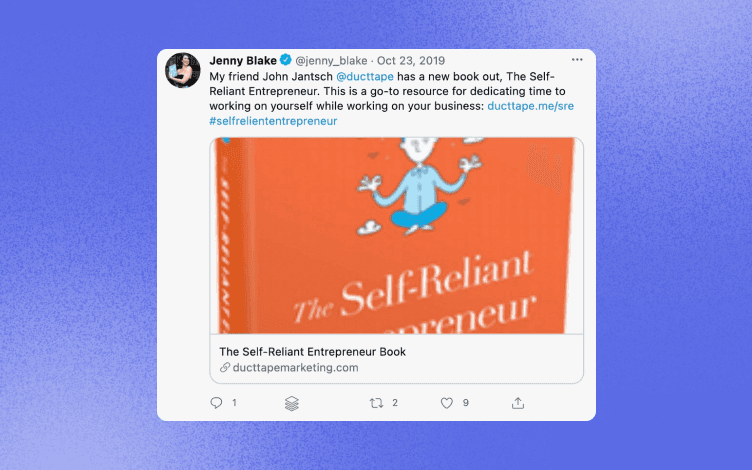
Conclusion
As we said, social media personal branding serves as your CV.
And to make it polished and professional-looking, you should always use a reliable graphic design app along the way.
Glorify is a powerful tool to create or edit any image for different social media platforms.
Thanks to its intuitive UI, it’s beginner-friendly and easy to use:
1. Start with choosing among hundreds of available templates,
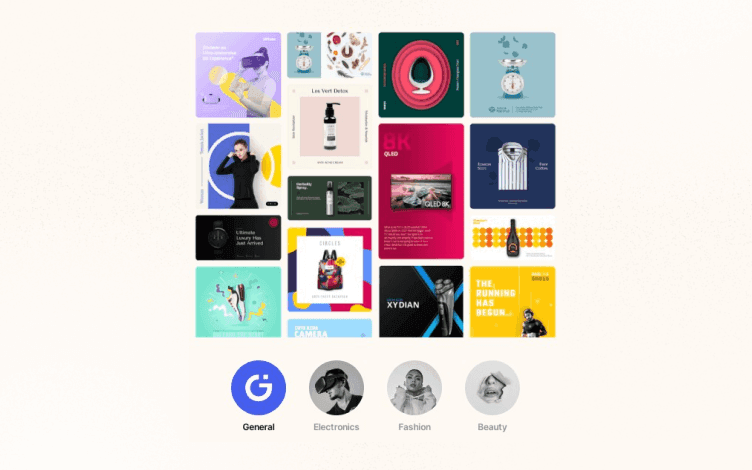
2. Remove the background with the Background remover,
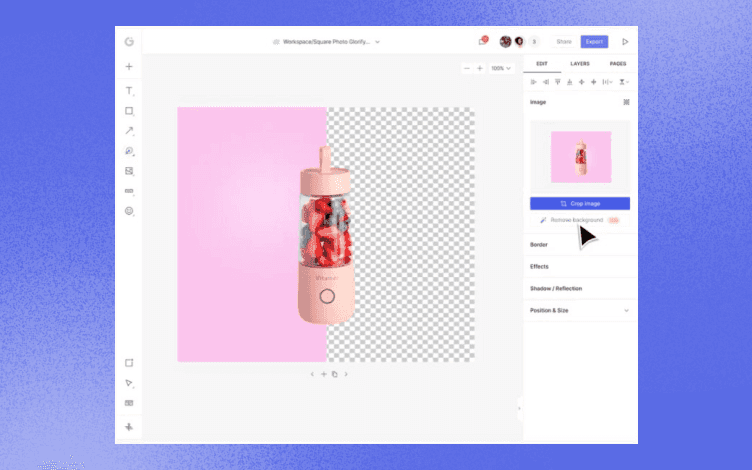
3. Easily resize any image to fit multiple platforms in one click,

4. Add your logo, custom font, or color palette using the Brand kit,
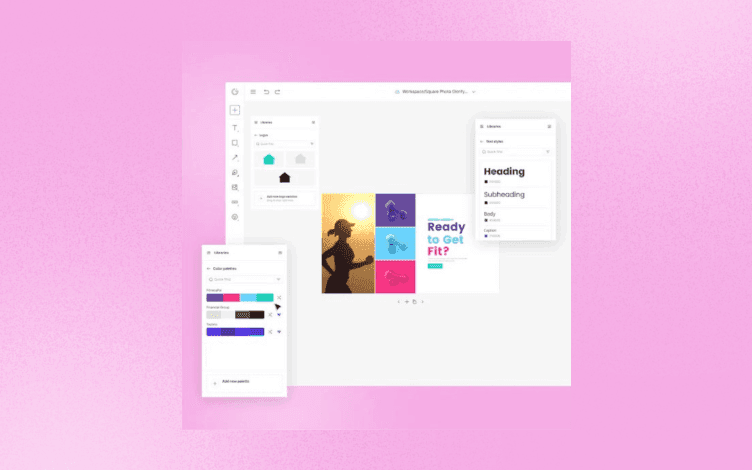
5. Customize your image by adding elements, shapes, images, etc., using Editor,

6. Keep all your marketing ideas in one place using Infinite canvas.

Sign up with Glorify today and let it do all the hard work for you!
Features
Explore templates
Alternatives
© 2024 Glorify App - All rights reserved








